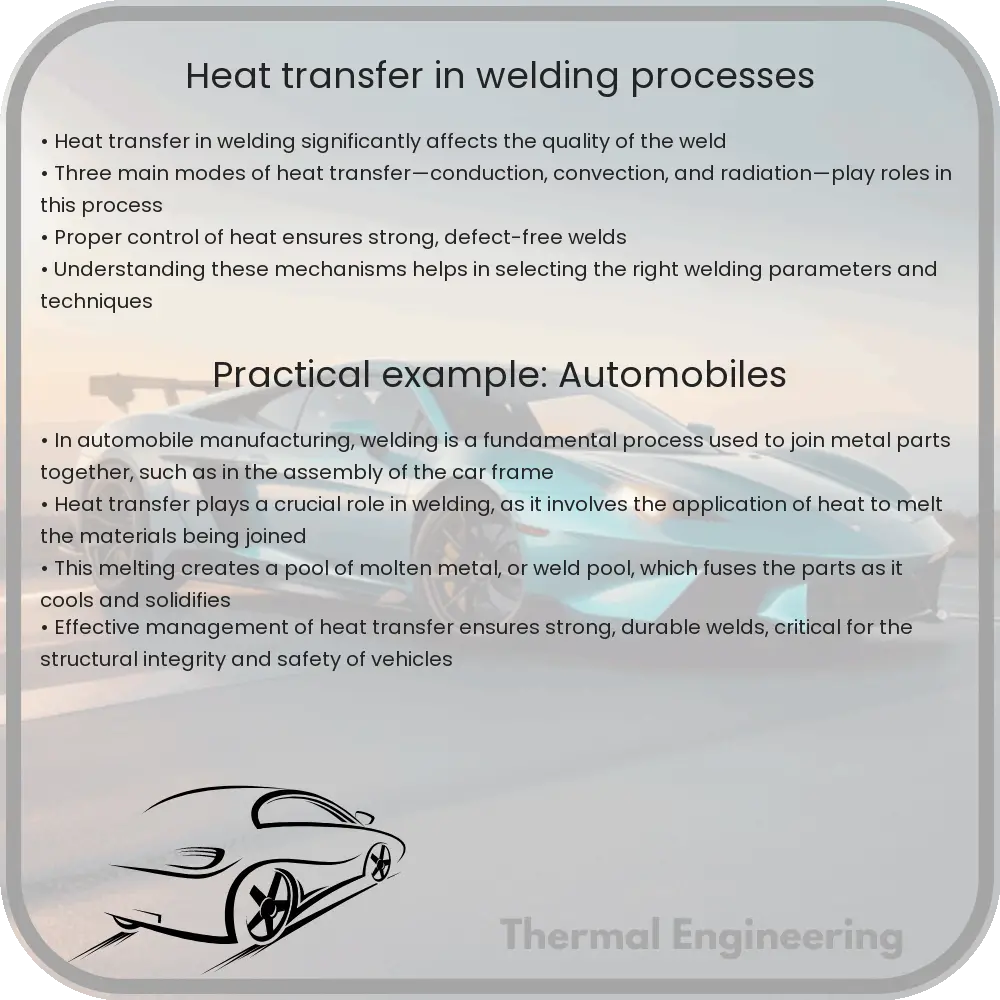Learn about the modes of heat transfer in welding and their impact on weld quality and material properties.

Understanding Heat Transfer in Welding Processes
Welding is a critical process in both manufacturing and construction, enabling the joining of materials, usually metals or thermoplastics, by causing coalescence. This is typically done by melting the workpieces and adding a filler material to form a pool of molten material that cools to become a strong joint. The efficiency and quality of a welding join depend significantly on how heat is transferred during the process. Let’s explore the basics of heat transfer in welding and its implications on the welding quality and properties of the material.
Types of Heat Transfer in Welding
There are three primary modes of heat transfer involved in welding:
- Conduction: Heat moves through the material from the area of higher temperature near the weld to the surrounding metal, which is cooler. The rate of heat conduction depends on the thermal conductivity of the material and the temperature gradient.
- Convection: In welding, convection can occur in the molten weld pool as the hotter molten metal rises and the cooler metal descends. This mode is influenced by the fluid properties of the molten pool and the welding environment.
- Radiation: Heat is also transferred via electromagnetic waves and can be significant at high temperatures when welding metals like steel.
Key Equations in Heat Transfer for Welding
Understanding the heat flow during the welding process is crucial for predicting the temperature distribution, cooling rates, and the resulting microstructure of the weld. The basic equation governing conduction of heat in solids is Fourier’s Law:
q = -k * ∇T
where q represents the heat flux, k is the thermal conductivity of the material, and ∇T is the temperature gradient.
In the context of a moving heat source like welding, the distribution of temperature can also be approximated using Rosenthal’s equation for a point source in an infinite medium:
T(x) = (q / (2 * π * k)) * (1 / r) * exp(-v * r / (2 * α))
Here, T(x) is the temperature at a point x, q is the heat input, r is the distance from the heat source, v is the speed of the welding torch, and α represents the thermal diffusivity of the material.
Effects of Heat Transfer on Weld Quality
The way heat is transferred during welding significantly affects the quality and characteristics of the weld. Some key influences include:
- Weld Penetration: Effective heat transfer determines the depth of the weld penetration, which is critical for the strength of the weld.
- Cooling Rate: The rate at which the weld cools can affect the microstructure of the welded materials, impacting mechanical properties such as hardness, strength, and toughness.
- Distortion and Stresses: Uneven or excessive heat can lead to warping, distortion, or residual stresses in the welded structure, potentially leading to structural failures.
- Heat-Affected Zone (HAZ): The area around the weld undergoes thermal cycles but doesn’t melt. The properties of this zone can be markedly different from both the base material and the weld metal due to microstructural changes.
Conclusion
Heat transfer in welding is a complex yet fascinating subject that plays a significant role in determining the effectiveness and quality of a weld. By understanding and controlling heat transfer, welders can prevent defects such as cracks, unwanted stresses, and ensure the weld is strong and durable. This knowledge is not only crucial for improving welding techniques but also for advancing materials engineering as a whole.